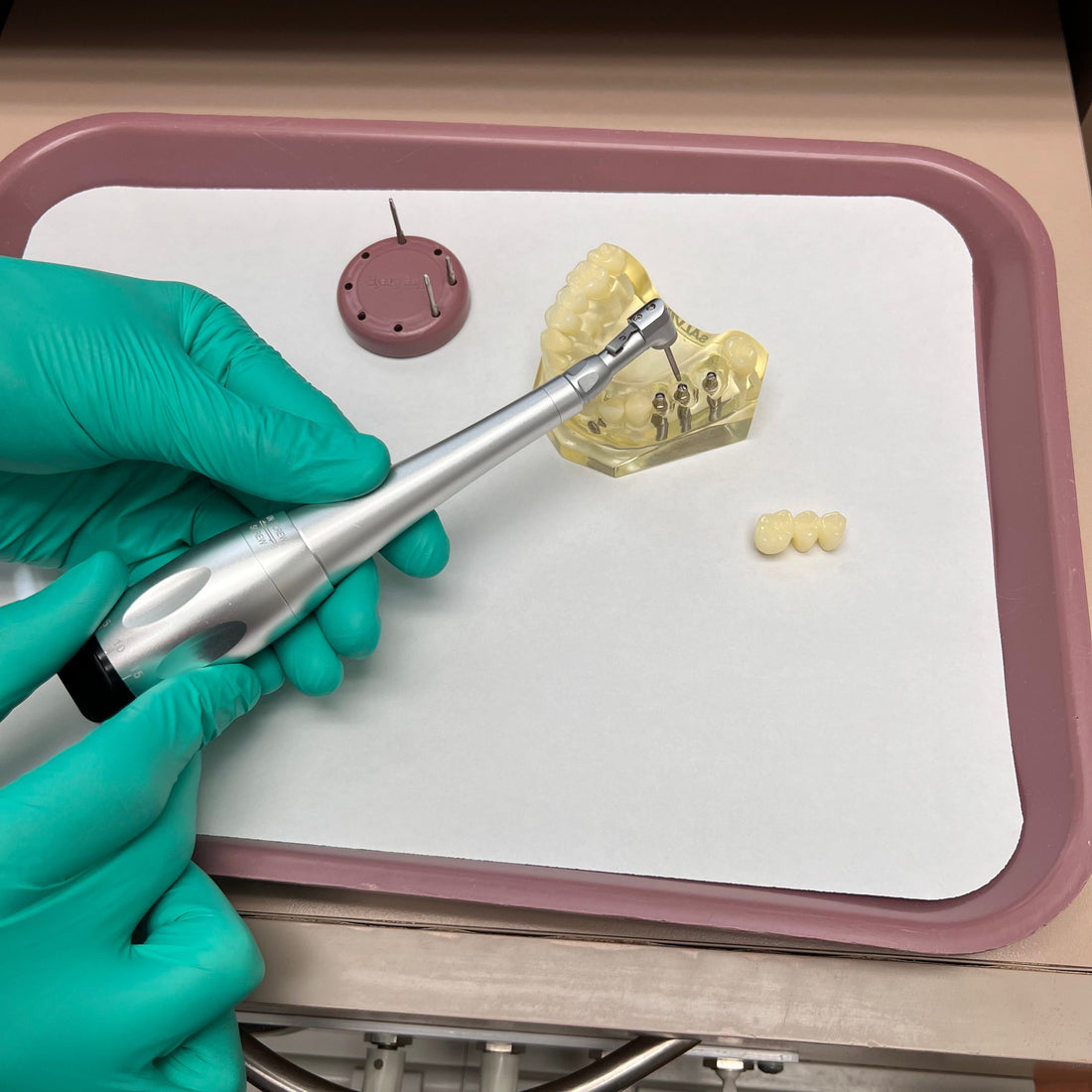
Why a Dentist Needs a Right Angle Variable Torque Driver: Beyond Simple Screws
Share
For most people, the image of a dentist involves drills, picks, and maybe a suction tube. But behind the scenes, modern dentistry relies on a variety of specialized tools, including the often-overlooked right angle variable torque driver. While it might sound like something from a mechanic's garage, this tool plays a crucial role in ensuring precision and patient comfort, particularly in implant dentistry and restorative procedures.
So, why would a dentist need this seemingly niche instrument? Let's break it down:
1. Implant Dentistry: Precision is Paramount
- Implant Placement and Abutment Connection: Dental implants involve placing titanium screws into the jawbone. Connecting the abutment (the part that holds the crown) to the implant requires precise torque. Too little torque can lead to loosening, while excessive torque can damage the implant or surrounding bone. A right angle variable torque driver allows dentists to apply the exact amount of force needed, minimizing the risk of complications.
- Limited Access: The oral cavity is a confined space. A standard screwdriver can be cumbersome, especially in posterior regions. The right angle design allows for better access and maneuverability, ensuring accurate placement even in hard-to-reach areas.
- Variable Torque Control: This feature is crucial. Different implant systems and components require specific torque values. A variable torque driver allows the dentist to adjust the force as needed, ensuring optimal stability and long-term success of the implant.
2. Restorative Dentistry: Ensuring Long-Term Stability
- Screw-Retained Restorations: Many crowns and bridges are secured with screws. A right angle variable torque driver ensures these screws are tightened to the precise specifications, preventing loosening and potential damage to the restoration.
- Minimizing Stress on Components: Applying the correct torque reduces stress on the restoration and the underlying implant or tooth, extending the lifespan of the dental work.
- Consistent Results: Using a calibrated torque driver provides consistent results, eliminating the guesswork associated with manual tightening. This consistency is essential for predictable and reliable outcomes.
3. Patient Comfort and Safety
- Reduced Trauma: Precise torque application minimizes stress on the patient's jawbone and surrounding tissues, reducing discomfort and promoting faster healing.
- Preventing Complications: By ensuring proper tightening, the right angle variable torque driver helps prevent complications such as screw loosening, implant failure, and bone loss.
- Enhanced Precision: The angulation and controlled torquing allows for less slippage, and more accurate placement, leading to less potential trauma.
In essence, the right angle variable torque driver empowers dentists to:
- Achieve predictable and reliable outcomes.
- Minimize the risk of complications.
- Enhance patient comfort and safety.
- Work efficiently in confined spaces.
While it might seem like a small tool, its impact on the success of dental procedures is significant. The next time you visit your dentist, remember that precision and technology play a vital role in ensuring your oral health.
Shop ours here and see what implant systems it is compatible with here.
